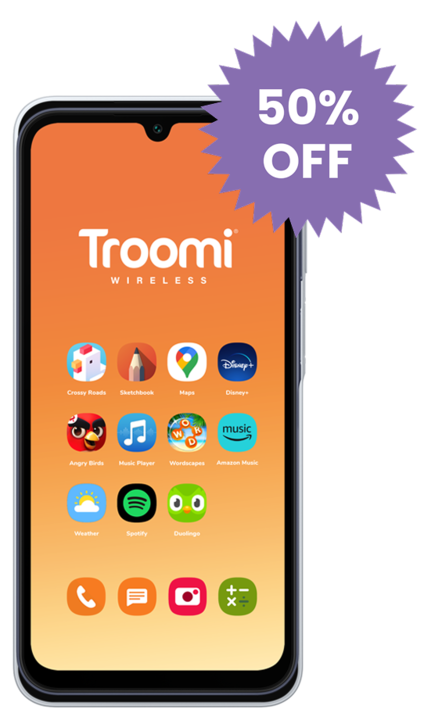Unless you live in a mountain cabin far, far away, technology is unavoidable. From preschool to senior year, kids will watch educational videos, test their knowledge in virtual learning games, access their textbooks on tablets, and take classes in keyboarding and computer basics.
So, in a world where kids are constantly exposed to technology, taking some time to be “unplugged” doesn’t sound like such a bad idea. But what happens when your child needs to get a hold of you while they’re at school, and they can’t?
This happens in areas called “dead zones.” What is a cell phone dead zone, what causes cell phone dead zones, and why are schools dead zones? Let’s find out.
What Is a Cell Phone Dead Zone?
A dead zone is a location where cell signals from cell towers cannot reach cell phones. In a dead zone, people will experience dropped calls, unsent or undelivered text messages, slow download speeds, and poor Internet connection.
While these frustrations often arise on canyon roads, out in the mountains, and in rural areas, they frequently occur in schools as well. Many schools contain at least one dead zone, but it’s more likely for schools to have multiple dead zones.
Most schools already have cell phone policies in place that prohibit use in the classroom and other areas. However, no matter how hard it is to accept, the reality is that dangerous things can—and do—happen in schools. In 2022, there were 46 school shootings; that is the highest number since 1999.
And that only accounts for gun violence. Children can also be exposed to other threats at school, like knives, physical fights, illicit substances, and medical emergencies.
What if your child is assisting a hurt classmate and can’t call for help? What if they need to stay late after school and can’t call or text to let you know? Cell phone dead zones are not just inconvenient, they have the potential to be unsafe.
What Causes Cell Phone Dead Zones?
There are a number of factors that could be responsible for cell phone dead zones:
- Cell tower distance. The farther away you are from a cell tower, the weaker the cell signal will be. This is common in rural areas where cell towers are far and few between—and the cell towers that do exist are significantly spread apart.
- High user volume. Has your phone ever slowed down at a concert or sporting event? When too many people are using their phones in the same place, everyone experiences slow speeds and unreliable connections. Cell towers have limited bandwidth and can only support so much usage at one time!
- Physical obstructions. Certain materials—like concrete, metal, tinted glass, and insulation—can weaken and even block cell signals. This happens often in basements, commercial buildings, elevators, and while driving through tunnels.
- Cell phone jammers. Cell phone jammers are devices that transmit signals of the same radio frequency as cell phones, disrupting cell phone communication and functionality. Though using a cell phone jammer is illegal, one teacher installed one in his classroom thinking it would help his students’ cell phone problem. You never know!
Noting these possibilities, why are schools dead zones? Typically, location and physical obstructions are the culprits.
Most schools are built with cement blocks and concrete. These thick building materials heavily interfere with cell signals. This is especially true of schools in rural areas. If cell towers are already far apart from one another, an obstruction like a school building will make the cell signals even weaker.
Can You Fix Cell Phone Dead Zones?
Though options are limited, it is possible to improve cell phone dead zones:
- Use signal boosters. Signal boosters collect an existing weak signal, amplify it, then rebroadcast it throughout the dead zone. This enhances the signal and offers stronger, more reliable cell service. However, these devices can cost hundreds to thousands of dollars; most schools simply don’t have the funding to make the investment.
- Connect to a femtocell. A femtocell is a more affordable form of signal booster. The device is plugged into a modem or router, then uses the Internet connection to boost cell signals.
- Enable Wi-Fi calling. On your child’s phone, enable the Wi-Fi calling feature. This allows their phone to make calls and send texts using a Wi-Fi connection, which all schools have.
- Switch networks. Simply put, some areas offer better service through one carrier than another. Ask your family, friends, and neighbors about their carriers and the kind of service they’re getting. You just might need to make a switch!
If you have concerns about cell phone dead zones at your child’s school, talk about them! Meet with a teacher or administrator to discuss dead zones and consider solutions. Schools are common cell phone dead zones, but there are options worth trying for the sake of kids’ safety!
Keep your kids safe in school, at home, and everywhere else with Troomi. These Samsung devices offer everything a child needs in a phone—and nothing that they don’t. They can call, text, take pictures, and even have access to our expertly vetted KidSmart® Apps and the Internet, if that’s what you decide! Customize their phone’s functionality through our Parent Portal command center, making adjustments as they mature and their needs change. Click here to learn more!


